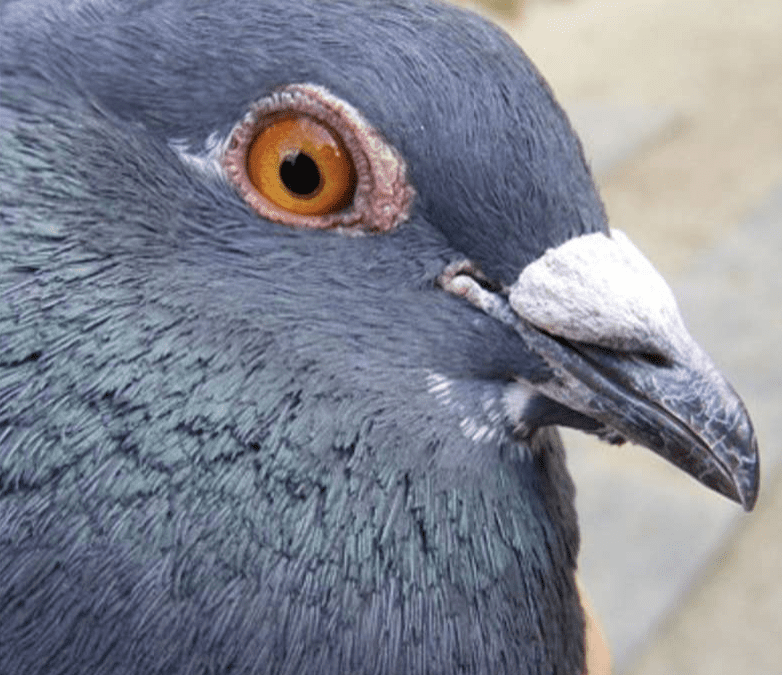
by Pigeon Patrol | Feb 7, 2022 | Bird Spike, Pigeon Predators, Pigeon Spikes, Pigeons, Pigeons in the News, Raccoons, Sparrows
Where do you go for your daily headlines? Your stock prices? Certainly not your neighborhood pigeons. Thomson Reuters, also known as The Answer Company, is the world’s largest provider of news and information to businesses and professionals. As early as the 1850s, they were sending news of bond prices across the English Channel on carrier pigeons.
Thomson Reuters, also known as The Answer Company, is the world’s largest provider of news and information to businesses and professionals. As early as the 1850s, they were sending news of bond prices across the English Channel on carrier pigeons.
Lincoln’s assassination was first reported into Europe by Baron Reuter, and he did it by sending fishing ships out to catch the steamers as they were coming across the Atlantic and getting back first. So being first, and being fast is paramount to Thomson Reuters, and it has been since day one.
Though much has changed and evolved since the days of its first office in the city of London where they transmitted share price quotes to Paris via the new Dover-Calais telegraph cable, what hasn’t changed is the responsibility to supply mission-critical news to businesses around the world.
With the rapid rise in digital advancements, what has changed, is the vast amount of information to manage. Professionals are consuming the news via mobile apps on various devices, portfolio management is influenced by headlines, and machines can be programmed to perform trades based upon market fluctuations. Getting it first is vitally important in the news business. Thomson Reuters leans on speed to meet the needs of today’s digital customers. Rapidity and accuracy is a duty its customers count upon them to fulfill; a duty they take seriously.
News Travels Fast
Using SAP HANA, they’ve been able to double the speed at which they can ingest polling data and get more than a tenfold increase in the way they analyze that data. Running live on SAP allows them to do what used to take days, and do it almost instantaneously.
A good example of this is the Polling Explorer. As you can imagine, the use of the polling explorer was widespread during the 2016 pre-elections. Today, Thomson Reuters’ polling data is easily interrogated. Back in the early eighties however, polling data meant a big book of data that landed on your desk with a thud, and this would be only the highlight results. If you really wanted to analyze that data, you would have to ask for cross-tabs to be created. It would take hours, if not days, to analyze what-ifs. With today’s level of data interactivity, running SAP HANA means getting a live data experience.
Source
Pigeon Patrol Products & Services is the leading manufacturer and distributor of bird deterrent (control) products in Canada. Pigeon Patrol products have solved pest bird problems in industrial, commercial, and residential settings since 2000, by using safe and humane bird deterrents with only bird and animal friendly solutions. At Pigeon Patrol, we manufacture and offer a variety of bird deterrents, ranging from Ultra-flex Bird Spikes with UV protection, Bird Netting, 4-S Bird Gel and the best Ultrasonic and audible sound devices on the market today.
Voted Best Canadian wholesaler for Bird Deterrent products ten years in a row.
Contact us at 1- 877– 4– NO-BIRD, (604) 585-9279 or visit our website at www.pigeonpatrol.ca
Pigeon/Pigeon Patrol / Pigeons Roosting / Vancouver Pigeon Control /Bird Spikes / Bird Control / Bird Deterrent / Pigeon Deterrent? Surrey Pigeon Control / Pest /Seagull deterrent / Vancouver Pigeon Blog / Birds Inside Home / Pigeons in the cities / Ice Pigeons/ What to do about pigeons/ sparrows , Damage by Sparrows, How To Keep Raccoons Away, Why Are Raccoons Considered Pests/ De-fence / Pigeon Nesting/ Bird Droppings / Pigeon Dropping/ woodpecker control/ Professional Bird Control Company/ Keep The Birds Away/ Birds/rats/ seagull/pigeon/woodpecker/ dove/sparrow/pidgeon control/pidgeon problem/ pidgeon control/flying rats/ pigeon Problems/ bird netting/bird gel/bird spray/bird nails/ bird guard
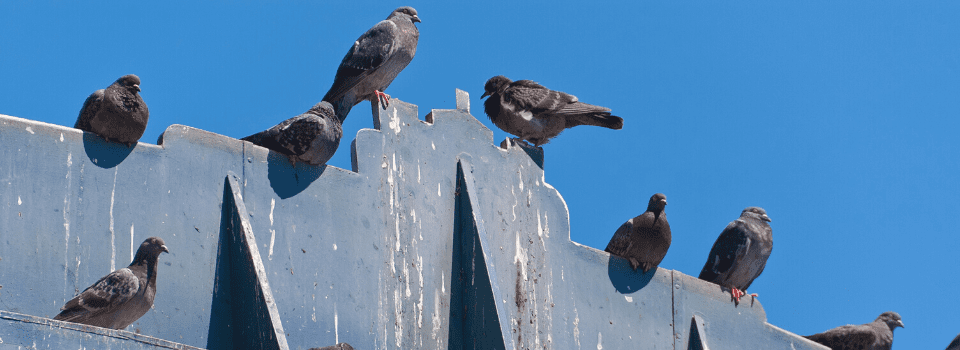
by Pigeon Patrol | Feb 7, 2022 | MBCA, pet bird, Pigeon Control, Pigeon Droppings, Pigeon Patrol's Services, Pigeon Predators
Contractors tackling the long-running pigeon problem at the Scottish Parliament have issued a warning about the potential health risks of bird muck on the building
This is not a recent problem. It was obvious from occasional visits years ago.
Maybe if it had been a more conventional design, this bizarre occurrence wouldn’t be happening.
Keep those windows open to ventilate for covid but never mind what untold diseases you might catch from pigeons.
Aberdeen train station has a weird electronic bird of prey which seems to keep pigeons away. The recording of the screeching sound is quite convincing and the silhouette is quite good too. The mechanical wing movement, not so much.
Would imagine they won’t be long in throwing resources at it unlike the damp and infestation in the housing that they turn a blind eye to.
Pigeons have done more for the people of the UK than that place. Flatten it, sack them and plant some trees.
Well that may be the excuse the other parties needed to say the SNP is suffering from mad doo disease!
Has anyone considered what the poor pigeons might catch from those that are already in that place.
Pigeons are more astute than I gave them credit for!
Is this not an issue at the new infirmary building too?
Chuck a loaf or two of bread on the building a day, keep them well fed.
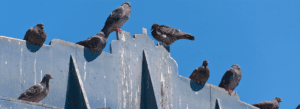
I work in a pharmacy and we (so far) have had supplies coming in daily. We were only without any for a couple of hours and that’s only because people were constantly coming in for them, don’t panic there will be enough.
They were handing them out in Dobbies the other day; don’t know if they do this every day.
Costco were giving them out today.
Testing should only be done when someone feels unwell.
I made a fortune from my mates, isolation over in time for the New Year.
You can get them at testing center’s – got one today.
Yes, always managed to get them online or at the local chemist.
Shambles! Cheese and wine more important!
Yes, I was given some last week when I had my booster.
No, can’t find any. I’m asthmatic and have COPD – it scares me that I can’t find any.
Handing them out in Midlothian Community Hospital.
Yes, got some yesterday at Ainslie Park Leisure Centre.
Piershill has become a battleground of wills between residents and the council over how bins should be serviced
Edinburgh council should give themselves a round of applause. Well done in transforming one of the most beautiful cities in the world into a third world slum.
Source
Pigeon Patrol Products & Services is the leading manufacturer and distributor of bird deterrent (control) products in Canada. Pigeon Patrol products have solved pest bird problems in industrial, commercial, and residential settings since 2000, by using safe and humane bird deterrents with only bird and animal friendly solutions. At Pigeon Patrol, we manufacture and offer a variety of bird deterrents, ranging from Ultra-flex Bird Spikes with UV protection, Bird Netting, 4-S Bird Gel and the best Ultrasonic and audible sound devices on the market today.
Voted Best Canadian wholesaler for Bird Deterrent products ten years in a row.
Contact us at 1- 877– 4– NO-BIRD, (604) 585-9279 or visit our website at www.pigeonpatrol.ca
Pigeon/Pigeon Patrol / Pigeons Roosting / Vancouver Pigeon Control /Bird Spikes / Bird Control / Bird Deterrent / Pigeon Deterrent? Surrey Pigeon Control / Pest /Seagull deterrent / Vancouver Pigeon Blog / Birds Inside Home / Pigeons in the cities / Ice Pigeons/ What to do about pigeons/ sparrows , Damage by Sparrows, How To Keep Raccoons Away, Why Are Raccoons Considered Pests/ De-fence / Pigeon Nesting/ Bird Droppings / Pigeon Dropping/ woodpecker control/ Professional Bird Control Company/ Keep The Birds Away/ Birds/rats/ seagull/pigeon/woodpecker/ dove/sparrow/pidgeon control/pidgeon problem/ pidgeon control/flying rats/ pigeon Problems/ bird netting/bird gel/bird spray/bird nails/ bird guard
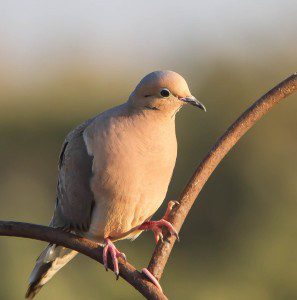
by Pigeon Patrol | Feb 2, 2022 | MBCA, pet bird, Pigeon Control, Pigeon Droppings, Pigeon Patrol's Services, Pigeon Predators
Feeding birds is a wonderful way to help your yard’s avian visitors fuel up for migration and make it through a tough winter. It can also provide great opportunities for wildlife photography and observation. But it’s not enough to set your feeder and forget it. You need to clean it out, or you risk inadvertently causing the birds that visit to get sick. The same goes for birdbaths.
Some of the more common diseases that birds can spread through feeders include house finch eye disease (the colloquial name for mycoplasmal conjunctivitis, which can infect more than just the bird for which it’s named), salmonellosis (caused by salmonella bacteria), aspergillosis (a fungal respiratory disease), and avian pox. If you see a sick bird or one you suspect died from a disease outbreak, don’t pick it up or try to treat it yourself. Instead, follow these tips from the Cornell Lab of Ornithology, or call the National Wildlife Health Center for instructions.
To prevent the spread of illness in the birds that frequent your seed buffet, try these three steps:
Clean feeders regularly
The National Wildlife Health Center recommends cleaning bird baths and feeders with a solution of nine parts water to one part bleach. (If there is visible debris, scrub it off before soaking in the bleach solution.) Dry out the feeder before hanging it back up. Project FeederWatch, a joint effort between Cornell Lab of Ornithology and Birds Canada, recommends cleaning seed feeders every two weeks or so. Double the frequency of cleaning if you suspect disease a-lurking.
Tidy below the feeder
This can mean raking or shoveling up feces and hulls (seed casings)—particularly those that are moldy, wet, or spoiled—and throwing them out, Project Feederwatch recommends. That’ll also help prevent scattered food from attracting rodents. On snow-covered lawns, scraping off a few layers of snow should do the trick.
Pigeon Patrol Products & Services is the leading manufacturer and distributor of bird deterrent (control) products in Canada. Pigeon Patrol products have solved pest bird problems in industrial, commercial, and residential settings since 2000, by using safe and humane bird deterrents with only bird and animal friendly solutions. At Pigeon Patrol, we manufacture and offer a variety of bird deterrents, ranging from Ultra-flex Bird Spikes with UV protection, Bird Netting, 4-S Bird Gel and the best Ultrasonic and audible sound devices on the market today.
Voted Best Canadian wholesaler for Bird Deterrent products ten years in a row.
Contact us at 1- 877– 4– NO-BIRD, (604) 585-9279 or visit our website at www.pigeonpatrol.ca
Pigeon/Pigeon Patrol / Pigeons Roosting / Vancouver Pigeon Control /Bird Spikes / Bird Control / Bird Deterrent / Pigeon Deterrent? Surrey Pigeon Control / Pest /Seagull deterrent / Vancouver Pigeon Blog / Birds Inside Home / Pigeons in the cities / Ice Pigeons/ What to do about pigeons/ sparrows , Damage by Sparrows, How To Keep Raccoons Away, Why Are Raccoons Considered Pests/ De-fence / Pigeon Nesting/ Bird Droppings / Pigeon Dropping/ woodpecker control/ Professional Bird Control Company/ Keep The Birds Away/ Birds/rats/ seagull/pigeon/woodpecker/ dove/sparrow/pidgeon control/pidgeon problem/ pidgeon control/flying rats/ pigeon Problems/ bird netting/bird gel/bird spray/bird nails/ bird guard
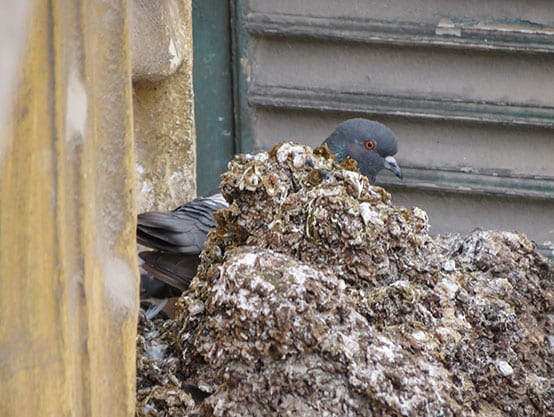
by Pigeon Patrol | Feb 2, 2022 | MBCA, pet bird, Pigeon Control, Pigeon Droppings, Pigeon Patrol's Services, Pigeon Predators
Enteric illnesses remain the second largest source of communicable diseases worldwide, and wild birds are suspected sources for human infection. This has led to efforts to reduce pathogen spillover through deterrence of wildlife and removal of wildlife habitat, particularly within farming systems, which can compromise conservation efforts and the ecosystem services wild birds provide. Further, Salmonella spp. are a significant cause of avian mortality, leading to additional conservation concerns. Despite numerous studies of enteric bacteria in wild birds and policies to discourage birds from food systems, we lack a comprehensive understanding of wild bird involvement in transmission of enteric bacteria to humans. Here, we propose a framework for understanding spillover of enteric pathogens from wild birds to humans, which includes pathogen acquisition, reservoir competence and bacterial shedding, contact with people and food, and pathogen survival in the environment. We place the literature into this framework to identify important knowledge gaps. Second, we conduct a meta-analysis of prevalence data for three human enteric pathogens, Campylobacter spp., E. coli, and Salmonella spp., in 431 North American breeding bird species. Our literature review revealed that only 3% of studies addressed the complete system of pathogen transmission. In our meta-analysis, we found a Campylobacter spp. prevalence of 27% across wild birds, while prevalence estimates of pathogenic E. coli (20%) and Salmonella spp. (6.4%) were lower. There was significant bias in which bird species have been tested, with most studies focusing on a small number of taxa that are common near people (e.g. European starlings Sturnus vulgaris and rock pigeons Columba livia) or commonly in contact with human waste (e.g. gulls). No pathogen prevalence data were available for 65% of North American breeding bird species, including many commonly in contact with humans (e.g. black-billed magpie Pica hudsonia and great blue heron Ardea herodias), and our metadata suggest that some under-studied species, taxonomic groups, and guilds may represent equivalent or greater risk to human infection than heavily studied species. We conclude that current data do not provide sufficient information to determine the likelihood of enteric pathogen spillover from wild birds to humans and thus preclude management solutions. The primary focus in the literature on pathogen prevalence likely overestimates the probability of enteric pathogen spillover from wild birds to humans because a pathogen must survive long enough at an infectious dose and be a strain that is able to colonize humans to cause infection. We propose that future research should focus on the large number of under-studied species commonly in contact with people and food production and demonstrate shedding of bacterial strains pathogenic to humans into the environment where people may contact them. Finally, studies assessing the duration and intensity of bacterial shedding and survival of bacteria in the environment in bird faeces will help provide crucial missing information necessary to calculate spillover probability. Addressing these essential knowledge gaps will support policy to reduce enteric pathogen spillover to humans and enhance bird conservation efforts that are currently undermined by unsupported fears of pathogen spillover from wild birds.
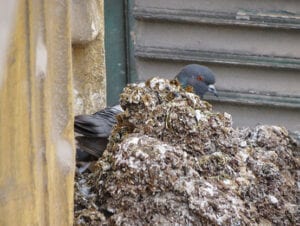
a pigeon bird standing by guano manure
Source
Pigeon Patrol Products & Services is the leading manufacturer and distributor of bird deterrent (control) products in Canada. Pigeon Patrol products have solved pest bird problems in industrial, commercial, and residential settings since 2000, by using safe and humane bird deterrents with only bird and animal friendly solutions. At Pigeon Patrol, we manufacture and offer a variety of bird deterrents, ranging from Ultra-flex Bird Spikes with UV protection, Bird Netting, 4-S Bird Gel and the best Ultrasonic and audible sound devices on the market today.
Voted Best Canadian wholesaler for Bird Deterrent products ten years in a row.
Contact us at 1- 877– 4– NO-BIRD, (604) 585-9279 or visit our website at www.pigeonpatrol.ca
Pigeon/Pigeon Patrol / Pigeons Roosting / Vancouver Pigeon Control /Bird Spikes / Bird Control / Bird Deterrent / Pigeon Deterrent? Surrey Pigeon Control / Pest /Seagull deterrent / Vancouver Pigeon Blog / Birds Inside Home / Pigeons in the cities / Ice Pigeons/ What to do about pigeons/ sparrows , Damage by Sparrows, How To Keep Raccoons Away, Why Are Raccoons Considered Pests/ De-fence / Pigeon Nesting/ Bird Droppings / Pigeon Dropping/ woodpecker control/ Professional Bird Control Company/ Keep The Birds Away/ Birds/rats/ seagull/pigeon/woodpecker/ dove/sparrow/pidgeon control/pidgeon problem/ pidgeon control/flying rats/ pigeon Problems/ bird netting/bird gel/bird spray/bird nails/ bird guard
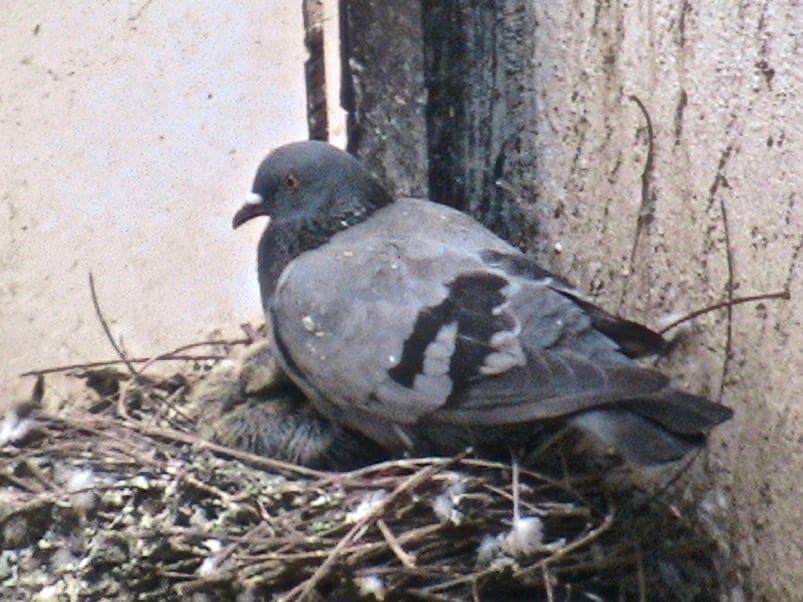
by Pigeon Patrol | Feb 2, 2022 | MBCA, pet bird, Pigeon Control, Pigeon Droppings, Pigeon Patrol's Services, Pigeon Predators
Work with bird or bat droppings can expose workers to some serious, infectious diseases.
Bird and bat droppings
The risk from disturbing small amounts of fresh droppings is very low but grows higher from disturbing large accumulations of concentrated, dried droppings.
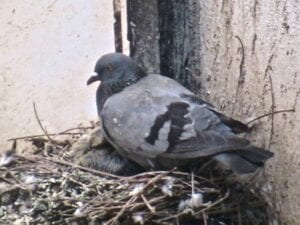
Histoplasmosis
Histoplasmosis is an infection caused by a fungus called Histoplasma capsulatum. It is found in soil contaminated with bird (especially pigeon) or bat droppings. People can be infected by inhaling the fungal spores. Young children, the elderly and people who have a medical condition or are undergoing medical treatment that lowers immunity are most at risk.
Cryptococcosis
Cryptococcosis is an infection caused by a fungus called Cryptococcosis neoformans. It is found in the environment, particularly in soil that is contaminated with bird (especially pigeon) droppings. People can be infected by inhaling the fungal spores. Infection is rare in people who are otherwise healthy but those with low immunity are at increased risk. Cryptococcosis commonly causes meningitis (an infection of the brain) but infection can occur in other parts of the body.
Psittacosis
Psittacosis is caused by bacteria called Chlamydia [or Chlamydophilia] psittaci. It is shed in the droppings and respiratory secretions of infected birds, including parrots, pigeons and poultry. People can be infected by inhaling the bacteria. Psittacosis generally causes a mild to moderate respiratory illness with pneumonia, but more severe illness can occur. Young children, the elderly, pregnant women and people who have a medical condition or are undergoing medical treatment that lowers immunity are most at risk.
Gastrointestinal illness
Bird and bat droppings can contain germs that cause gastrointestinal illness with symptoms of nausea, vomiting and diarrhoea. People can be infected if they inadvertently swallow the germs, usually via contaminated hands.
Who is at risk?
Workers who disturb accumulations of dried bird or bat droppings are at risk. For example:
- workers who clean, renovate or demolish buildings, roofs, bridges and other structures where birds or bats roost
- spelunkers (cave explorers) and others who work in caves or other enclosed spaces harbouring birds or bats
- pest control and animal removal specialists
- facilities maintenance workers
- heating, ventilation and air conditioning (HVAC) systems workers
- workers who handle poultry manure
- workers who work with soil or clear foliage in areas harbouring birds or bats.
Managing exposure
Eliminating exposure is the most effective way to protect workers, however this may not always be possible. Where the risk cannot be eliminated, it must be minimised.
Prevent droppings from accumulating
- Deter birds by sealing entry points, modifying roosting or nesting sites and removing food sources. Seek advice from an animal removal or pest control specialist if required.
- Regularly inspect for droppings and clean up promptly.
Cleaning large accumulations of bird and bat droppings
- Where possible, schedule cleaning activities for when the site is not being used and restrict access. Take special care if vulnerable people such as patients, elderly residents or young children could be in the affected area.
- Manage exposure to dust and aerosols from disturbing droppings. For example
- use dust barriers and ventilation controls (e.g. industrial vacuum (PDF, 0.62 MB), HEPA filtration unit)
- seal doors, windows and air vents
- avoid cleaning methods that disperse dust and aerosols (e.g. dry sweeping, high-pressure washer, household vacuum and compressed air)
- wet the droppings by applying a light mist of plain or soapy water and keep wetting the material during its removal to prevent it from drying out.
- Once the droppings are removed, clean the area thoroughly using water and detergent and then apply a disinfectant. Disinfectants require a minimum contact time to be effective. They may not work properly in the presence of organic matter such as droppings, so it is important to clean surfaces before applying disinfectant. Alternatively, use a product that is both a detergent and a disinfectant.
- Place waste in a container that can be securely sealed during storage, transport and disposal.
- Clean contaminated equipment and tools after use.
- Do not reuse contaminated building materials and debris.
- It is unnecessary to test surfaces before or after cleaning because the types of germs found in droppings are widespread in the environment.
- Consider using a professional cleaning service that specializes in removing this type of waste.
Personal hygiene practices
Workers should adopt personal hygiene practices.
- Wash hands thoroughly with soap and water before eating, drinking and smoking, after contact with droppings and after removing personal protective equipment (PPE).
- If using a waterless hand sanitiser make sure it contains an alcohol content of at least 60 per cent, use only on visibly clean hands and wash your hands with soap and water at the first opportunity.
- Check your skin before starting work and cover any cuts and other broken skin with a clean, dry dressing. If you sustain a wound at work, clean and cover it straight away.
- Avoid touching your face and do not eat, drink or smoke when working with droppings.
- Wash or shower after finishing work.
Workers must be provided with washing facilities (PDF, 0.57 MB). This should include clean running water, soap and paper towel or an air hand dryer. Field workers should be provided with portable hand washing facilities. Use handwashing signage to remind workers to wash their hands.
Workers must also be provided with first aid facilities, clean eating facilities and drinking water.
Information, training, instruction and supervision
Provide workers with information about:
- health risks from work with bird and bat droppings
- safe work procedures
- selection and use of PPE
- hand washing practices.
Personal protective equipment
Workers should wear a properly fitted (PDF, 0.86 MB) particulate respirator when disturbing dried bird or bat droppings to prevent inhaling dust and aerosols. For major clean-up work, additional PPE including gloves, protective clothing, safety eyewear and boot covers should be worn. Take care to avoid heat stress when wearing multiple items of PPE, especially when working in hot and humid conditions.
Source
Pigeon Patrol Products & Services is the leading manufacturer and distributor of bird deterrent (control) products in Canada. Pigeon Patrol products have solved pest bird problems in industrial, commercial, and residential settings since 2000, by using safe and humane bird deterrents with only bird and animal friendly solutions. At Pigeon Patrol, we manufacture and offer a variety of bird deterrents, ranging from Ultra-flex Bird Spikes with UV protection, Bird Netting, 4-S Bird Gel and the best Ultrasonic and audible sound devices on the market today.
Voted Best Canadian wholesaler for Bird Deterrent products ten years in a row.
Contact us at 1- 877– 4– NO-BIRD, (604) 585-9279 or visit our website at www.pigeonpatrol.ca
Pigeon/Pigeon Patrol / Pigeons Roosting / Vancouver Pigeon Control /Bird Spikes / Bird Control / Bird Deterrent / Pigeon Deterrent? Surrey Pigeon Control / Pest /Seagull deterrent / Vancouver Pigeon Blog / Birds Inside Home / Pigeons in the cities / Ice Pigeons/ What to do about pigeons/ sparrows , Damage by Sparrows, How To Keep Raccoons Away, Why Are Raccoons Considered Pests/ De-fence / Pigeon Nesting/ Bird Droppings / Pigeon Dropping/ woodpecker control/ Professional Bird Control Company/ Keep The Birds Away/ Birds/rats/ seagull/pigeon/woodpecker/ dove/sparrow/pidgeon control/pidgeon problem/ pidgeon control/flying rats/ pigeon Problems/ bird netting/bird gel/bird spray/bird nails/ bird guard

by Pigeon Patrol | Jan 25, 2022 | Pigeon Droppings, Pigeon Patrol's Services, Pigeon Predators, Pigeon Spikes, Pigeons, Pigeons in the News
Even the bird-brained can follow a leader. When pigeons fly in flocks, each bird falls behind another with better navigational skill, and the savviest among them leads the flock, scientists report in the April 8 Nature.
The research suggests hierarchies can serve peaceful purposes in the animal kingdom, where dominance by brute force is often the rule. “A pecking order tends to be just that — a pecking order,” says Iain Couzin of Princeton University, an expert in collective behavior who was not involved in the research.
The research also suggests that for pigeons, dominance isn’t set in stone. While one bird often emerged as the leader, other birds also stepped up. This flexibility in leadership had previously been seen only in some small groups of fish.
From schools to packs to swarms to flocks, collective behavior is widespread among animals. But in many cases, the important interactions are with nearest neighbors, and control of the group’s movement is distributed among members rather than hierarchical.

Biological physicist Tamás Vicsek of Eötvös Loránd University in Budapest and his colleagues studied flight dynamics in homing pigeons, which fly in flocks but conveniently return to their roosts. The researchers outfitted 13 pigeons with tiny backpacks carrying GPS devices that measured shifts in birds’ flight direction five times per second. Flocks of eight to 10 birds flew with the devices during homing flights (a roughly 14-kilometer trip back to the roost) and spontaneous “free” flights near home. Each bird also flew solo flights of about 15 kilometers each.
Analysis of GPS logs showed that for each excursion, the flock had one leader followed by at least three or four other birds. Each of these followers was in turn followed by other birds in the flock. Comparing the solo flight paths to the group flights showed that the birds with the best navigational skills led the flock.
While flocks have hierarchies, they’re not dictatorships, notes Vicsek. One bird led eight of the 13 flights, while other birds took the lead on the rest of the trips. Vicsek likens the dynamics to a group of peers deciding where to eat dinner. “Maybe someone knows the area restaurants best, or there is a person who’s a gourmand — or maybe they are the most outspoken,” he says. This one person might pick the place to eat for several nights, although another person might chime in now and then. And then there is the person with no say, whom everyone knows has terrible taste in food.
“These pigeons know each other. They know which is the smartest. The fastest bird will even follow the slower one who knows the way home the best,” say Vicsek. Videos of the birds’ positions during flight showed that if the best navigator moves a little to the left, it takes about a third of a second for other birds to do the same. But if the least savvy bird makes a move “the others don’t care,” Vicsek says.
Pigeons’ brains may be wired for follow-the-leader, comments behavioral neuroscientist Lucia Jacobs of the University of California, Berkeley. When the left eye sees something, for example, it sends all the visual information to the right brain hemisphere, and vice versa. This “extreme lateralization” may play a role in organizing flocks, the new work suggests. A pigeon following another was most likely to be flying on its partner’s right, seeing this leader with its left eye. “It’s very cool,” Jacobs says.
Source
Pigeon Patrol Products & Services is the leading manufacturer and distributor of bird deterrent (control) products in Canada. Pigeon Patrol products have solved pest bird problems in industrial, commercial, and residential settings since 2000, by using safe and humane bird deterrents with only bird and animal friendly solutions. At Pigeon Patrol, we manufacture and offer a variety of bird deterrents, ranging from Ultra-flex Bird Spikes with UV protection, Bird Netting, 4-S Bird Gel and the best Ultrasonic and audible sound devices on the market today.
Voted Best Canadian wholesaler for Bird Deterrent products ten years in a row.
Contact us at 1- 877– 4– NO-BIRD, (604) 585-9279 or visit our website at www.pigeonpatrol.ca
Pigeon/Pigeon Patrol / Pigeons Roosting / Vancouver Pigeon Control /Bird Spikes / Bird Control / Bird Deterrent / Pigeon Deterrent? Surrey Pigeon Control / Pest /Seagull deterrent / Vancouver Pigeon Blog / Birds Inside Home / Pigeons in the cities / Ice Pigeons/ What to do about pigeons/ sparrows , Damage by Sparrows, How To Keep Raccoons Away, Why Are Raccoons Considered Pests/ De-fence / Pigeon Nesting/ Bird Droppings / Pigeon Dropping/ woodpecker control/ Professional Bird Control Company/ Keep The Birds Away/ Birds/rats/ seagull/pigeon/woodpecker/ dove/sparrow/pidgeon control/pidgeon problem/ pidgeon control/flying rats/ pigeon Problems/ bird netting/bird gel/bird spray/bird nails/ bird guard

 Thomson Reuters, also known as The Answer Company, is the world’s largest provider of news and information to businesses and professionals. As early as the 1850s, they were sending news of bond prices across the English Channel on carrier pigeons.
Thomson Reuters, also known as The Answer Company, is the world’s largest provider of news and information to businesses and professionals. As early as the 1850s, they were sending news of bond prices across the English Channel on carrier pigeons.








